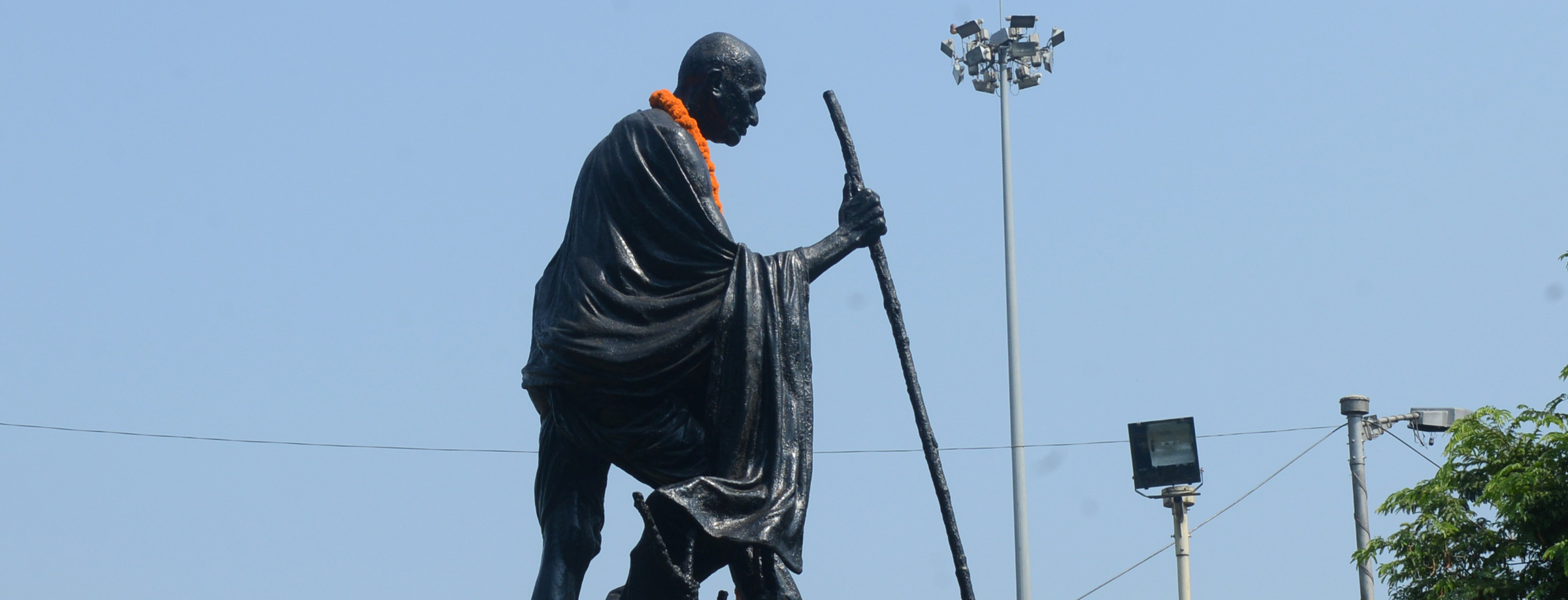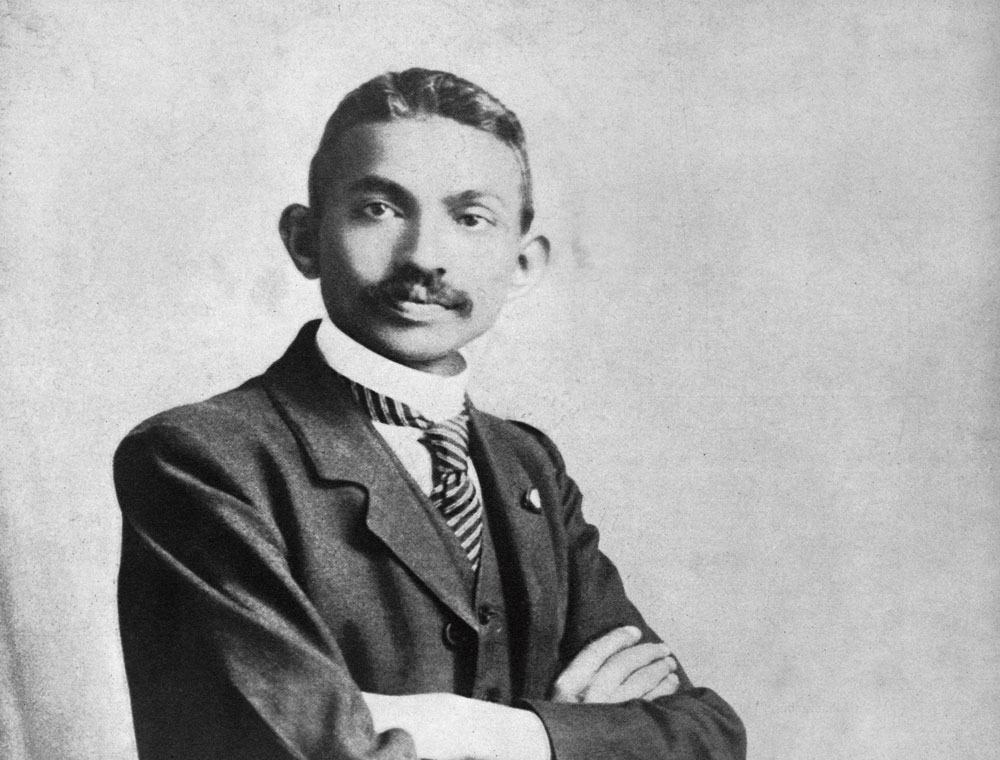Mahatma Gandhi transcended the identity of his birth more effectively than any other Indian of modern times. He was a Hindu who devoted his career to (and sacrificed his life for) ensuring equal rights for Muslims. When he was tried for sedition in 1922, and the British judge asked him his profession, he replied “farmer and weaver”, two forms of livelihood entirely foreign to his merchant forbears. He loved the Gujarati language and made notable contributions to its literature; yet he knew at first hand, and was deeply loved in, all other linguistic regions of India.
I knew of Gandhi’s conspicuous lack of sectarianism through academic research on his life and career. Earlier this month, I was given a fresh, vivid demonstration of his uniquely pan-Indian status when I attended a function in the city of Coimbatore to mark his 150th birth anniversary (which is to fall later this year). It was a weekday; yet, by 9 am, the open-air hall was absolutely full, with more than a thousand citizens of the city gathered to honour the memory of the Mahatma. These were residents of Coimbatore, young and old, men, women and children, of all religions (and none).
The celebrations began with a series of songs, rendered by a choir of schoolchildren, well trained and with fine, modulated voices. They first sang patriotic songs composed by the great Tamil poet, Subramania Bharati. Then they rendered a song in Hindi, “Sabarmati ke sant tune kamal kar diya”, originally composed by Kavi Pradeep for the 1954 film, Jagriti, where it was sung by a young Asha Bhosle. Some more Tamil songs followed, before the choir ended with two hymns beloved of the Mahatma — “Vaishnava jana to” and “Raghupati Raghav Raja Ram”.
After the children had done their turn, they exited the stage, and a group of elders walked up to occupy it. They included a lady from Durban and a dozen Tamilians, all of whom were being honoured that day. The lady was Ela Gandhi, the Mahatma’s granddaughter, a brave fighter against apartheid and an MP in South Africa’s first multi-racial Parliament, who was being bestowed the ‘Defender of Peace’ award for her services to reconciliation in her native land. The dozen Tamilians were social workers in the Sarvodaya tradition, who had devoted their lives to such Gandhian pursuits as basic education, the promotion of spinning and weaving and sustainable development. Ela Gandhi is in her late seventies; and the others were even older. One honorand was one hundred and four years old. A great cheer went up as each of them went up to receive the scroll and citation.
The Coimbatore felicitation had two main organizers. One was the Bharatiya Vidya Bhavan, founded in 1938 by the writer, lawyer and patriot, K.M. Munshi, working with (as the Bhavan’s website has it) “the blessings of Mahatma Gandhi” and (as the Bhavan representative reminded us on the day) the blessings of Vallabhbhai Patel, Jawaharlal Nehru, Chakravarti Rajagopalachari and Sarvepalli Radhakrishnan as well. The other was Shanti Ashram, founded in 1986 by the Gandhian educator, Dr M. Aram, who worked for many years in Nagaland before returning to his native Tamil Nadu to become vice-chancellor of the Gandhigram Rural University. The Shanti Ashram, now run by his daughter, Dr Vinu Aram, promotes community health and well-being.
These were the two principal hosts, but there were as many as fifty other organizations that had come together to make the event possible. They included the Gurdwara Singh Sabha, the Jamaat-e-Islami Hind, the Christian Fellowship Hospital, the Brahma Kumaris and the Sri Ayyappan Puja Sangham, as well as the World Telugu Federation, the Shree Coimbatore Gujarati Sabha, the Karnataka Association, the Coimbatore Hindi Prachar Sabha and the Rajasthani Sangh.
This being Coimbatore, there were also sponsoring organizations that were recognizably Tamil in character, such as the Nanneri Kazhagam and the Kamban Kazhagam. And the Gandhian organizations in the state had also come forward in solidarity; thus, listed among the ‘Committee of Hosts’ were the Kasturba Gandhi Memorial Trust, the Gandhipuram Sarvodaya Sangh and the Ahimsa Foundation.
The diversity of language and religious faith on display was noteworthy, and entirely Gandhian. However, it was also in the spirit of the Mahatma that no government department was among the hosts, nor any large corporate house either. This was a voluntary effort, driven and directed by citizens and citizens’ groups alone.
Gandhi’s own connections to Tamils and Tamil Nadu were deep and enduring. They began in South Africa, where the bravest satyagrahis in his struggles were often Tamil, such as Mr and Mrs Thambi Naidu, and the martyrs Nagappan and Valiamma. It was a Tamil friend in South Africa, J.M. Lazarus, who first acquainted Gandhi with the pervasive caste discrimination within India itself, and told him that any political movement he led in the homeland must have the abolition of untouchability as a central plank.
In his work in India as well, some of Gandhi’s closest associates were Tamils. Pre-eminent in this regard was C. Rajagopalachari — ‘Rajaji’ — Gandhi’s Southern Commander, who did the most to take the message of inter-faith harmony, abolition of untouchability and the promotion of khadi across Tamil Nadu. Rajaji was a man of courage and independence of mind, whom Gandhi once referred to as “the keeper of my conscience”. Then there was the Tamil Christian, J.C. Kumarappa, trained in economics at Columbia University (his thesis was supervised by E.R.A. Seligman, who also guided B.R. Ambedkar’s doctoral research). In 1929, Kumarappa gave up a flourishing accountancy practice in Mumbai to join Gandhi. For the next four decades, he worked on promoting what he called “the economy of permanence”. Convinced that industrial society (in both its capitalist and communist variants) would destroy the earth and those who lived on it, he sought to rebuilt the rural economy on ecological lines by working on water conservation, recycling, the replacement of chemical fertilizers by organic manure, and the renewal of craft traditions. A third Tamil Gandhian of note was Dr Soundaram Ramachandran, born in the prosperous TVS industrial family, who turned her back on privilege and wealth to live with the poor and the needy.
There was also a personal, family relationship, which attached the Mahatma to this state; namely, that while three of his children married Gujaratis, a fourth married a Tamil. The children, grand-children and great-grandchildren of this union have carried forward the connection of Gandhi to Tamil Nadu.
Gandhi’s debt to Tamils was very large. Tamil Nadu’s debt to Gandhi was not insubstantial either. To be sure, Gandhi had similarly intimate connections with the other major provinces of India as well. It is the pan-Indian quality of his life and legacy that marks him out from other social reformers and political leaders that this country has given birth to. In this year of his 150th birth anniversary celebrations, hopefully, the other states of the Union will also suitably commemorate and take forward their own understanding of Gandhi. The Coimbatore event may be a worthy model to follow; conceived and organized by citizens, working together in the spirit of inter-regional and inter-religious solidarity that was one of the Mahatma’s great bequests to his nation.













